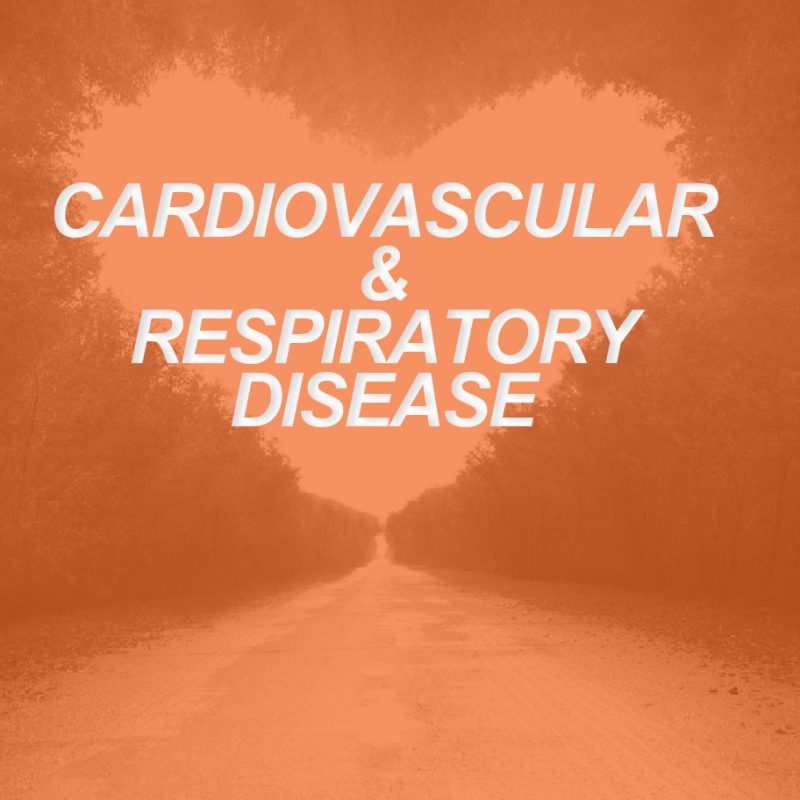
Exercise may feel difficult or even scary for individuals with cardiovascular and respiratory disease or problems. As personal trainers, you may have questions about how frequently a client with such a condition must exercise and what precautions you should consider.
Medical practitioners say that physical activity can improve heart function and hasten one’s recovery with proper guidance. Also, physical movement is necessary, especially among chronic lung disease patients, as these ailments can lead to muscle loss and strain.
This awareness is welcome news for individuals in the United States. Based on the 2019 report published in the AHA (American Heart Association) journal Circulation, nearly half of American adults have cardiovascular diseases.
Meanwhile, approximately 37 million people in America have respiratory issues, according to the American Lung Association.
Physical training can benefit all types of cardiovascular and respiratory concerns as long as they suit your clients’ needs. For instance, exercise can reduce the side effects of chemotherapy and other cancer treatments for mesothelioma. This cancer known to be caused by asbestos exposure occurs in the thin layer of tissue covering most internal organs. Moreover, an exercise regimen can strengthen these individuals’ immune systems enough to withstand future procedures.
Personal Trainer Guidance
How can you assure clients with cardiovascular and respiratory diseases or conditions that you can aid them in exercising safely? At what intensity level should these individuals exercise, given their ailment?
As a personal trainer, remember that you’re part of your clients’ health-promotion team. You’re responsible for consulting their physicians and gathering a complete health-history inventory to design a safe and effective exercise program for them.
For more information and to find support communities, try to include the Mesothelioma Group in your research. Organizations like them can offer educational resources for coping with cancer treatment and recovery techniques.
Why Hiring a Trainer Is More Advisable for Individuals With Cardiovascular and Respiratory Concerns
The AHA recommends at least 150 minutes per week of moderate aerobic exercises for the general public. However, the case is different for individuals undergoing treatment or recovering from cardiovascular and respiratory conditions, including cancer. Medical providers can endorse exercise programs through a physical therapist or other training professional as part of rehabilitation.
Here are the reasons why working with your clients is more effective for their ongoing treatment and recovery than if they perform the exercises alone:
- You can schedule and design routines that match a doctor’s recommendation, the client’s physical condition, and their health goals.
As a personal trainer, you must verify your clients’ existing conditions, current medication, and any recent surgeries they may have had, particularly the insertion of pacemakers among heart attack patients.
- You can ensure your patient’s safe recovery by advising them when to avoid workouts. These occasions include times when they are unwell, or if it’s risky to head to their center due to bad weather.
- You can monitor and provide instant feedback.
As certified professional trainers, you can ensure that your clients receive medical clearance before starting an exercise program.
Moreover, you can advise your clients on what movements to avoid, depending on their ailment. You should also watch how they move and tell them if they’re using the correct form, which can prevent pain and injuries.
By observing your clients’ performance, you can gauge whether the exercises are manageable or if they’re ready to exert more intensity on some routines.
The Positive Effects of Exercise on Leading Cardiovascular and Respiratory Conditions
Here are some of the benefits of physical training for your clients dealing with the following heart and lung ailments:
Hypertension or Blood Pressure
Physical activity can lower high blood pressure from 5 to 8 millimeters of mercury, the standard measurement for blood pressure. Reduced blood pressure can last from 4 up to 24 hours after exercise.
Some blood pressure medicine, such as beta-blockers, can affect heart rate and the accuracy of blood pressure.
You can teach your clients how to use the “Talk Test”—if they can talk while they’re exercising, they’re moving at a manageably moderate intensity.
Asthma
Exercise can strengthen your clients’ lung capacity, allowing more oxygen to flow into their lungs. More oxygen also improves blood circulation, which muscles need to keep moving. Exercise or physically demanding tasks sometimes trigger asthma symptoms like coughing, chest tightness, and shortness of breath. You can advise patients to confer with their doctors to determine what causes these symptoms.
Coronary Artery Disease (CAD)
Regular exercise can lower CAD risk factors, including:
- Inflammation
- Sympathetic activity in the heart that can increase heart rate
- Endothelial dysfunction or the narrowing of the blood vessels on the heart’s surface
Lung Cancer and Mesothelioma
Physical activity is also helpful for cancer patients regardless of their stage. Exercise can promote better sleep, increase appetite, and help maintain a healthy weight. Moving one’s body can also reduce the risk of acquiring co-existing conditions like diabetes and heart disease.
Doctors advise stretching, balance exercises, aerobic sets, and strength training for people with lung cancer and mesothelioma.
Myocardial Infarction
Physicians recommend cardiac rehabilitation for people who experienced myocardial infarction, the medical term for heart attack. During supervised exercise sessions, you can also teach your clients about self-managing their exercise duration, type, frequency, and intensity to avoid a future heart attack.
Chronic Heart Failure
Chronic heart failure is a progressive condition wherein one’s heart muscle can’t pump blood properly, leading to fluid build-up in the lungs and shortness of breath. An exercise routine can improve your client’s body functioning, leading to reduced symptoms and fewer hospital visits.
Key Takeaways
You can help your clients maintain and build on their cardiovascular and respiratory therapy gains by providing tailor-fit exercise plans.
In severe cases where your clients are at risk of a heart attack or other injury, coordinate with their physician to design a safe and effective exercise program. This way, your clients can attest to how beneficial it is to hire you as their trainer.
About the Author
 Casey Bloom’s field of study is concentrated in language and literature. She had worked as an advertising creative before writing for health and wellness sites. She is a vegan advocate enjoys cooking, dancing, and music.
Casey Bloom’s field of study is concentrated in language and literature. She had worked as an advertising creative before writing for health and wellness sites. She is a vegan advocate enjoys cooking, dancing, and music.
References
- Physical Activity and COPD
https://www.lung.org/lung-health-diseases/lung-disease-lookup/copd/living-with-copd/physical-activity
- Exercise and chronic disease: Get the facts
https://www.mayoclinic.org/healthy-lifestyle/fitness/in-depth/exercise-and-chronic-disease/art-20046049
- Safe Exercise for Patients with Heart Disease
nationaljewish.org/conditions/health-information/living-with-heart-disease/exercise-and-heart-disease
- Pulmonary Rehabilitation
https://www.msdmanuals.com/home/lung-and-airway-disorders/rehabilitation-for-lung-and-airway-disorders/pulmonary-rehabilitation
- Cardiovascular diseases affect nearly half of American adults, statistics show
https://www.heart.org/en/news/2019/01/31/cardiovascular-diseases-affect-nearly-half-of-american-adults-statistics-show
- American Heart Association Recommendations for Physical Activity in Adults and Kids
https://www.heart.org/en/healthy-living/fitness/fitness-basics/aha-recs-for-physical-activity-in-adults
- 10 ways to control high blood pressure without medication
https://www.mayoclinic.org/diseases-conditions/high-blood-pressure/in-depth/high-blood-pressure/art-20046974
- Physical Activity and Cardiovascular Disease
https://www.physio-pedia.com/Physical_Activity_and_Cardiovascular_Disease
- Influence of Physical Activity on Hypertension and Cardiac Structure and Function
https://www.ncbi.nlm.nih.gov/pmc/articles/PMC4624627/
- Benefits of Exercise When You Have Asthma
https://www.lung.org/lung-health-diseases/lung-disease-lookup/asthma/managing-asthma/asthma-and-exercise
- Exercise Training and Interventions for Coronary Artery Disease
https://www.mdpi.com/2308-3425/9/5/131/pdf?version=1650946642
- Endothelial Dysfunction
https://stanfordhealthcare.org/medical-conditions/blood-heart-circulation/endothelial-dysfunction.html
- Physical Activity and the Person with Cancer
https://www.cancer.org/treatment/survivorship-during-and-after-treatment/be-healthy-after-treatment/physical-activity-and-the-cancer-patient.html
- Exercise During Cancer Treatment
https://www.cancer.net/survivorship/healthy-living/exercise-during-cancer-treatment
- Heart Attack
https://www.hopkinsmedicine.org/health/conditions-and-diseases/heart-attack
18. Heart failure
https://www.mayoclinic.org/diseases-conditions/heart-failure/symptoms-causes/syc-20373142
19. 5 Tips for Exercise with Heart Failure
https://www.pennmedicine.org/updates/blogs/heart-and-vascular-blog/2015/july/5-tips-for-exercise-with-heart-failure
20. Efficacy and Safety of Exercise Training in Patients With Chronic Heart Failure HF-ACTION Randomized Controlled Trial https://jamanetwork.com/journals/jama/fullarticle/183708







